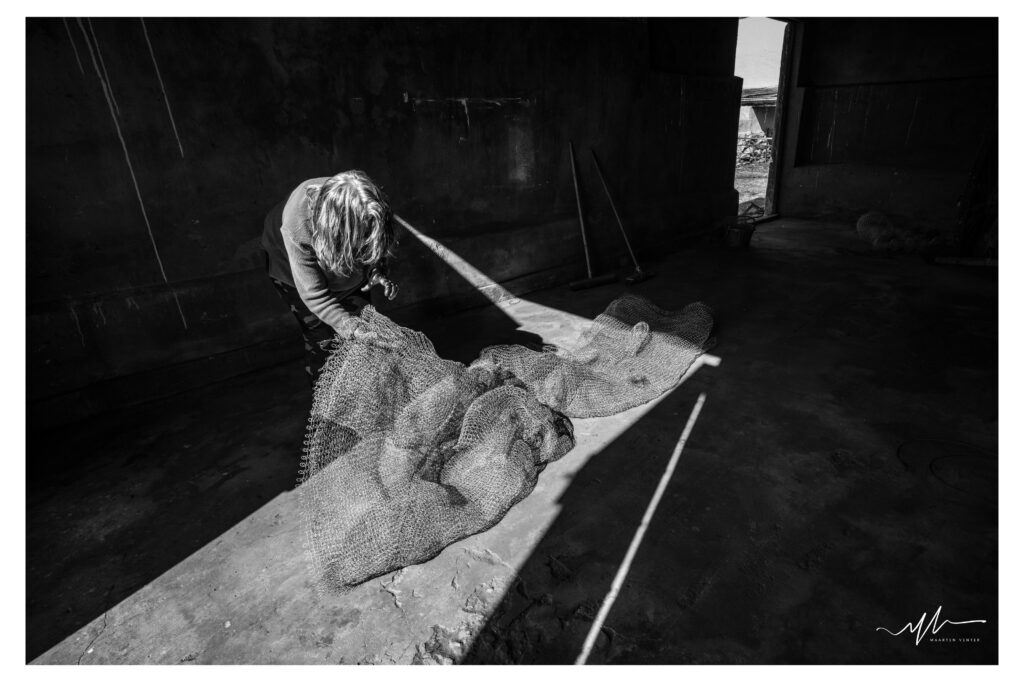The nests of sociable weavers have struck me as a symbol of how we navigate our connections—with others and the world around us. These birds build together, weaving layer upon layer, creating a home that houses hundreds of lives. Creating a nest is deeply tied to my experiences as a mother after losing our youngest son to self-death.
As I built the Kalahari Hotel, I realized I wasn’t just building a physical structure. I was trying to create a space to hold my memories, hopes, and fears. Like the birds, I wanted to construct something that could protect and nurture, but I also began to see how these protective spaces sometimes feel like barriers—keeping the world out and, sometimes, keeping me locked inside.
Looking at the intricate nests, I see more than just nature at work. I see a struggle with creating balance in my life—the desire to care for others while also needing room to breathe. I think about how easily those protective walls can turn into confinement, not just for me but also for the relationships and connections I cherish.
So, as I built this wire nest, the repetitive weaving wasn’t just a meditative process; it became a way for me to explore what it means to feel safe and yet disconnected from the natural world. In many ways, the wire itself reflects this. It can form something nurturing, but its rigid lines can also feel like barriers between me and the very thing I’m trying to connect with—nature, family, and myself.
The nest, like my own life, is filled with complex layers. It houses those who built it and other species that find refuge. I think about that often—how the spaces I create, physically and emotionally, can serve others and how they might unintentionally separate me from the outside world. My work with Kalahari Hotel has become a reflection on those spaces, the places where care and protection exist alongside a sense of confinement and distance.
Working with wire and using a looping technique became a way back to connecting and an act of resilience in the face of my own vulnerability. Somehow, I was reflecting on an intersection of human experience and nature’s resilience. I find myself in a rhythm of weaving that becomes both a release and a reflection of my inner world. The repetitive motions and the feeling of the material in my hands allow me to channel my emotions directly into the form. Like the artist Louise Bourgeois, I view making as essential—a way to process and transform feelings that are otherwise intangible. My subject is not the wire itself but the ideas and emotions it contains: care, loss, resilience. Each nest becomes a vessel for these, offering me a curative space for healing through creation.

My daughter in law who worked on the graphic design side of my invitations, said the choice of wire as material reminded her of the story of the Three Little Pigs: This story can serve as a meaningful allegory for the themes I explore in my nest-making, especially regarding materiality, protection, and the tension between safety and confinement. Using this familiar story, I can create a bridge for viewers to engage with the work on a deeper, symbolic level while adding an accessible, narrative-driven element to the exhibition.
The pigs’ houses (straw, sticks, and bricks) represent varying levels of strength, just as different materials (wire, raffia, and plant materials) symbolise different layers of protection or vulnerability in your nests.
Like the three pigs in the well-known fable, Kalahari Hotel explores the need for protection and the materials we choose to build our shelters. In the story, each pig’s house represents a different approach to safety, culminating in the strong brick house that protects them from the wolf. Similarly, the wire nests I’ve constructed reflect the desire for security and the tension between protection and confinement. Built from wire—unyielding—the nests echo the resilience found in nature, much like the sociable weavers’ nests. The nests, with their multiple chambers and used by different species, could be compared to the brick house, which is strong but also insulates its inhabitants from the outside world.
Yet, just as the pigs’ brick house separates them from the world outside, my wire nests also raise questions about the walls we build between ourselves and nature.
In the story, the pigs ultimately find safety in the brick house but must rely on one another to survive the wolf’s attacks. This mirrors the idea of Kalahari Hotel, where multiple birds and species find refuge in the communal nest.
My nests can symbolise individual protection and the idea that strength comes from community, cooperation, and shared spaces.
A local artist friend shared social media posts about birds in cities using strange materials to build nests with. This post by the Modern Met was about birds incorporating anti-bird spikes into their nests. On further investigation at the source site on https://mymodernmet.com/anti-bird-spike-nests/ , I found a scientific paper published by Hiemstra, A.F., Moeliker, C.W., Gravendeel, B. & Schilthuizen, M.
2023 – Published in Deinsea.nl 21: 17 – 25. (https://www.hetnatuurhistorisch.nl/fileadmin/user_upload/documents-nmr/Publicaties/Deinsea/Deinsea_21/Deinsea_21_17_25_2023_Hiemstra_et_al.pdf). My the use of man-made materials to make a nest was further strengthen by this article. The article discussed many man-made materials utilised by birds in city environments, such as scraps of netting, telephone wires, electric wires, aluminium and iron wires and clothes hangers. However, the reported anti-bird spikes could be seen as a hint at a functional use. They shared that the roof of the studied Antwerp magpie nest consists almost entirely of metal anti-bird spikes. Sixty-one strips were counted in the roof alone, containing 604 metal spikes, altogether 16.72 m of strips. The anti-bird spikes may represent the urban equivalent of the thorny branches used in ‘natural’ magpie nests and are another example of artificial nest material that mimics natural materials.